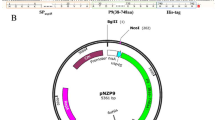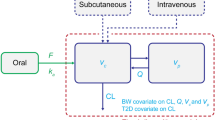Abstract
We isolated highly enriched fractions of villous and crypt cells from guinea pig intestine to determine whether this preparation provided a suitable model for comparing the transport of cobalamin and conjugated bile salts by these cell populations. The uptake of [57Co] cyanocobalamin by ileal villous cells was 30-fold greater when incubated with cobalamin bound to intrinsic factor than with free cobalamin. Intrinsic factor-mediated uptake of cobalamin could not be demonstrated using ileal crypt or jejunal villous or crypt cells. When incubated with [3H] taurocholate, the uptake by ileal villous cells was significantly greater than by ileal crypt or jejunal villous cells. These results indicate the suitability of using isolated guinea pig villous and crypt cells to examine transport processess of molecules that involve specialized mechanisms. The results also demonstrate that the undifferentiated crypt cell lacks specific transport processes necessary for the active absorption of cobalamin and taurocholate.
Similar content being viewed by others
References
LeBlond CP, Messier B: Renewal of chief cells and goblet cells in the small intestine as shown by radioautography after injection of thymidine-3H into mice. Anat Rec 132:247–259, 1958
Cairnie AB, Lamerton LF, Steel GG: Cell proliferation studies in the intestinal epithelium of the rat. I. Determination of the kinetic parameters. Exp Cell Res 39:528–538, 1965
Hendrix TR, Bayless TM: Digestion: Intestinal secretion. Annu Rev Physiol 32:139–164, 1970
Robinson JWL, Winistorfer B, Mirkovitch V: Source of net water and electrolyte loss following intestinal ischemia. Res Exp Med 176:263–275, 1980
Hallback DA, Jodal M, Sjoqvist A, Lundgren O: Evidence for cholera secretion emanating from the crypts. A study of villus tissue osmolality and fluid and electrolyte transport in the small intestine of the cat. Gastroenterology 83:1051–1056, 1982
Jodal M, Lundgren O: Countercurrent mechanisms in the mammalian gastrointestinal tract. Gastroenterology 91:225–241, 1986
Kinter WB, Wilson TH: Autoradiographic study of sugar and amino acid absorption by everted sacs of hamster intestine. J Cell Biol 25:19–39, 1965
Cardell R, Baden Hauser S, Porter KR: Intestinal triglyceride absorption in the rat An electronmicroscopical study. J Cell Biol 34:123–137, 1967
Castle WB: Factors involved in the absorption of vitamin B12. Gastroenterology 37:377–384, 1959
Lack W, Weiner IM:In vitro absorption of bile salts by small intestine of rats and guinea pigs. Am J Physiol 200:313–317, 1961
Donaldson RM, MacKenzie IL, Trier JS: Intrinsic factor-mediated attachment of vitamin B12 to brush border and microvillous membranes of hamster intestine. J Clin Invest 46:1215–1228, 1967
Wilson FA: Intestinal transport of bile acids. Am J Physiol 241:G83-G92, 1981
Cooper BA, Castle WB: Sequential mechanisms in the enhanced absorption of vitamin B12 by intrinsic factor in the rat. J Clin Invest 39:199–214, 1960
Gottlieb C, Lau KS, Wasserman LR, Herbert V: Rapid charcoal assay for intrinsic factor (IF), gastric juice unsaturated B12 binding capacity, antibody to IF and serum unsaturated B12 binding capacity. Blood 25:875–884, 1965
Weiser MM: Intestinal epithelial cell surface membrane glycoprotein synthesis. 1. An indicator of cellular differentiation. J Biol Chem 248:2536–2541, 1973
Porteous JW, Furneaux HM, Pearson CK, Morrison A: Poly(adenosine diphosphate ribose) synthetase activity in nuclei of dividing and of non-dividing but differentiating intestinal epithelial cells. Biochem J 180:455–463, 1979
Pinkus LM, Sulimovici S, Susser FI, Roginsky MS: Involvement of calmodulin in the regulation of adenylate cyclase activity in guinea pig enterocytes. Biochim Biophys Acta 762:552–559, 1983
Dahlqvist A: Assay of intestinal disaccharidases. Anal Biochem 22:99–107, 1968
Furlong NB: A rapid assay for nucleotide kinases using14C or3H-labeled nucleotides. Anal Biochem 5:515–522, 1963
Bingham EW, Zittle CA: Purification and properties of acid phosphatase in bovine milk. Arch Biochem Biophys 101: 471–477, 1963
Sutton DR, Donaldson RM, Jr: Synthesis and secretion of protein and pepsinogen by rabbit gastric mucosa in organ culture. Gastroenterology 69:166–174, 1975
Kapadia CR, Serfilippi D, Voloshin K, Donaldson RM Jr: Intrinsic factor-mediated absorption of cobalamin by guinea pig ileal cells. J Clin Invest 71:440–448, 1983
Lowry OH, Rosebrough NJ, Farr AL, Randall RJ: Protein measurement with the Folin phenol reagent. J Biol Chem 193:265–275, 1951
Zimmerman TW, Reinprecht JT, Binder HJ: Peptide binding to intestinal epithelium: Distinct sites for insulin, EGF and VIP. Peptides 6:229–235, 1985
Pinkus LM: Separation and use of enterocytes. Methods Enzymol 77:154–162, 1981
Walters JRF, Weiser MM: Calcium transport by rat duodenal villous and crypt basolateral membranes. Am J Physiol 252:G170-G177, 1987
Knickelbein RG, Aronson PS, Dobbins JW: Ion transport across brush-border (BBM) and basolateral membranes (BLM) from rabbit ileal villus and crypt cells. Gastroenterology 92:1472, 1987 (abstract)
Alpers DH: Protein synthesis in intestinal mucosa: The effect of route of administration of precursor amino acids. J Clin Invest 51:167–173, 1972
Forgeu-Lafitte ME, Marescot MR, Chamblier MC, Rosselin G: Evidence for the presence of insulin binding sites in isolated rat epithelial cells. Diabetologia 19:373–378, 1980
Fromm D, Field M, Silen W: Effect of insulin on sugar, amino acids and ion transport across isolated small intestine. Surgery 66:145–151, 1969
Olsen WA, Rosenberg IH: Intestinal transport of sugars and amino acids in diabetic rats. J Clin Invest 49:96–105, 1970
Krejs GJ, Fordtran JS: Effect of VIP infusion on water and ion transport in the human jejunum. Gastroenterology 78: 722–727, 1980
Levine JS, Nakane PK, Allen RH: Immunocytochemical localization of intrinsic factor-cobalamin bound to guinea pig ileumin vivo. Gastroenterology 82:284–290, 1982
Beck WS: Metabolic features of cobalamin deficiency in man.In Cobalamin: Biochemistry and Pathophysiology. BM Babior (ed). New York, Wiley, 1975, pp 403–450
Friedman PA, Shia MA, Wallace JK: A saturable high affinity binding site for transcobalamin II-vitamin B12 complexes in human placental membrane preparations. J Clin Invest 59:51–58, 1977
Youngdhal-Turner P, Rosenberg LE: Binding and uptake of transcobalamin II by human fibroblasts. J Clin Invest 61: 133–141, 1978
Haus M, Green PD, Hall CA: Species specificity in the immunologic reactions and biological functions of transcobalamin II. Proc Soc Exp Biol Med 162:295–298, 1979
Dietschy JM, Solomon HS, Siperstein MD: Bile acid metabolism. I. Studies on the mechanisms of intestinal transport. J Clin Invest 45:832–846, 1966
Wilson FA, Treanor LL: Studies of relationships among bile-acid uptake, Na+,K+-ATPase, and Na+ gradient in isolated cells from rat ileum. Gastroenterology 81:54–60, 1981
Wilson FA, Treanor LL: Characterization of the passive and active transport mechanisms for bile acid uptake into rat isolated intestinal epithelial cells. Biochim Biophys Acta 406:280–293, 1975
Trier JS: Morphology of the epithelium of the small intestine.In Handbook of Physiology, Section 6. CF Code (ed). Washington, DC, American Physiological Society, 1968, pp 1125–1175
Author information
Authors and Affiliations
Additional information
This research was supported by the Medical Research Service of the Veterans Administration and by a grant (AM 32734) from the National Institutes of Health.
Rights and permissions
About this article
Cite this article
Kapadia, C.R., Essandoh, L.K. Active absorption of vitamin B12 and conjugated bile salts by guinea pig ileum occurs in villous and not crypt cells. Digest Dis Sci 33, 1377–1382 (1988). https://doi.org/10.1007/BF01536991
Received:
Revised:
Accepted:
Issue Date:
DOI: https://doi.org/10.1007/BF01536991




